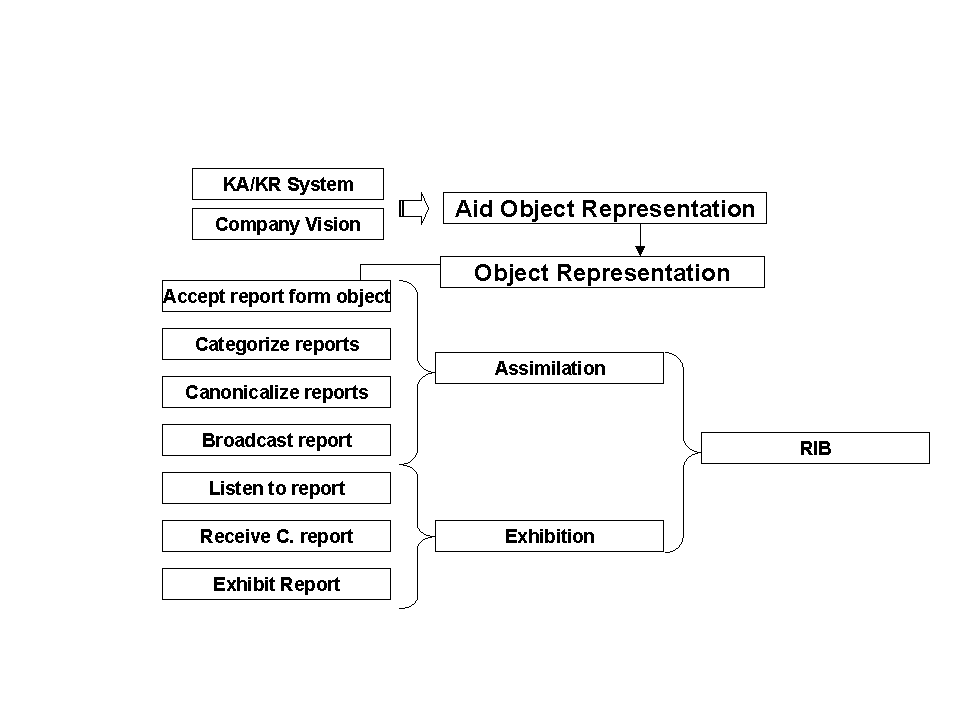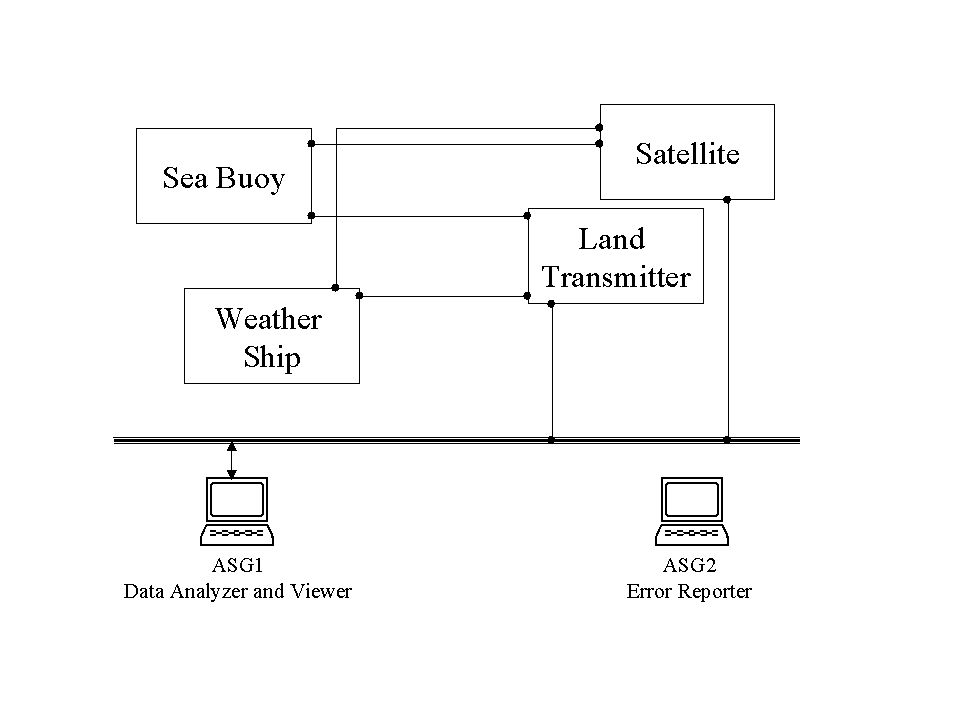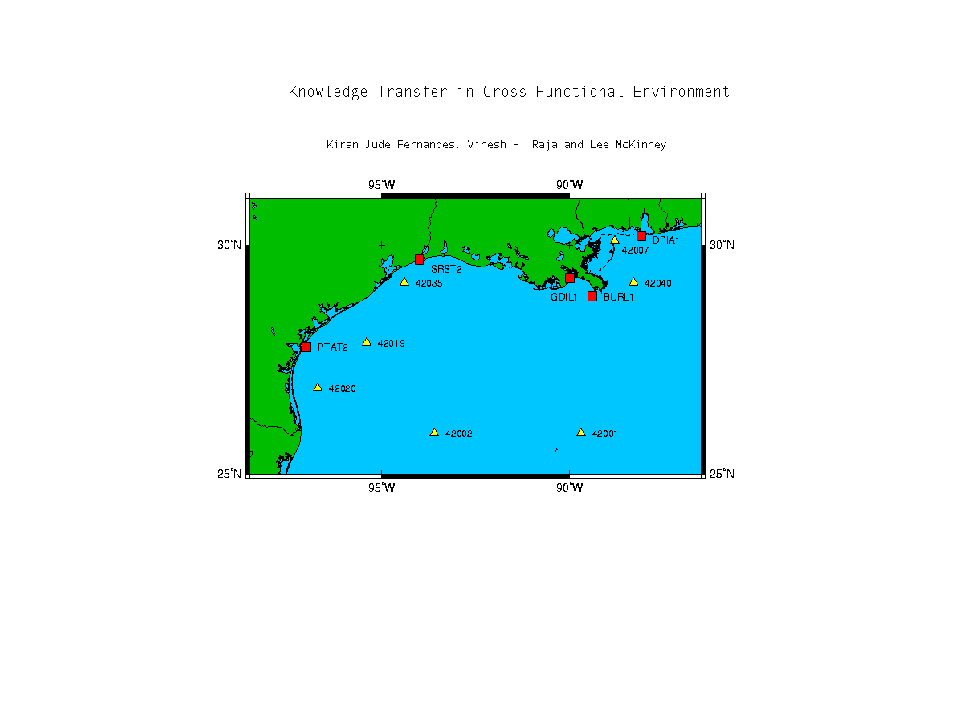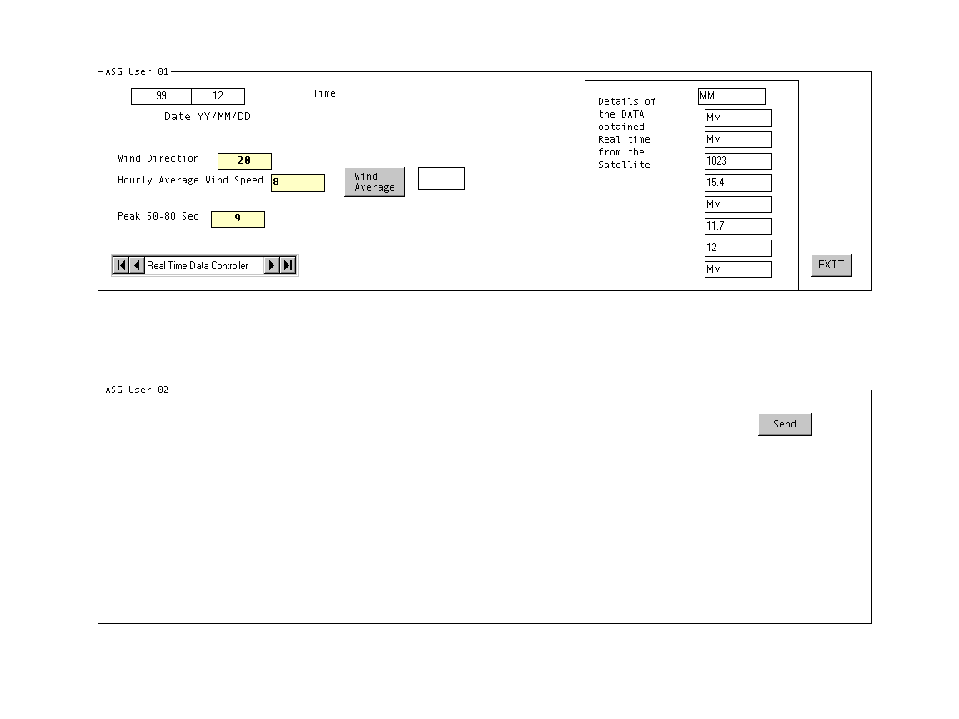
ABSTRACT:
Maintains that the key to survival in today's chaotic business environments is the adaptive Computer Integrated Enterprise (CIE). Defines the Knowledge Management System (KMS) as a sub-element of the CIE and alleges that the main concern with a KMS is to make the captured knowledge available over x-functional boundaries. Asks the question "What methodology can be used to make this possible, so that people that are not computer specialists can use such systems?" Contends that such a system can be achieved through Object Technology (OT). Asserts that the first step in distributing objects in the CIE is opening channels of communication between remote objects, and that this can be achieved using Publish and Subscribe technology. Reviews CIE systems and OT, and compares results of different networking techniques.
1. Introduction
The competitive environment of business is continuously changing, and the pace of that change is increasing at an accelerating rate. Where it was once possible for a company to stake out its marketing turf and defend its position for years, static positioning is now viable only in a few isolated industries. For most companies today, the only constant is change. The key to survival in today's chaotic business environment is rapid adaptation. The adaptive organisation can move quickly into new markets, deliver customer solutions instead of fixed products, and continuously outmaneuver its competition in the ongoing battle for market share. Such adaptive organizations are also called Computer Integrated Enterprises (CIE). One of the most important sub-system element within a CIE is Knowledge Management System (KMS).
Knowledge Management is the integration of knowledge from several sources and in several formats into a shared focus and language for a particular set of objectives and activities.
Commentators generally accept that there are two types of knowledge viz. Articulated and Tacit Knowledge (Wigg 1993:1994:1995). Articulation may be through speech, writing, drawings, patents, computer programs or mathematical relationships. Tacit knowledge can not be verbalized. It cannot be articulated. It dwells within peoples' minds and governs their interactions with and responses to other people in a particular context.
The main concern in a knowledge management system is the problem of making this "tacit knowledge" available across cross-functional departments without the risk of losing vital captured knowledge. Risk of Knowledge loss and creation of gaps in knowledge result from many possible causes. Common causes of knowledge loss include those listed below:
Managerial action needs to ensure that transfer of knowledge takes place assisted by Information Technology and formal Knowledge Acquisition techniques. The key question that arises is: What methodology can be used to make this possible, so that people that are not computer specialists can use such systems? Our methodology, based on this objective, originates from a project developed at SEMCOE (Sun European Manufacturing Center of Excellence). It has been developed jointly with the Advanced Systems Group. We have used the synergetic effect of object technology with publish-subscribe interactions to achieve knowledge transfer across cross-functional departments.
2. Literature Review
There are two approaches to knowledge management. These approaches are based on how people define the term "knowledge". These approaches seem consistent among both KM-vendors (researchers and consultants) and KM-users. The first approach is the Management of Information (MI) approach. Researchers and practitioners in this field tend to have their education in computer and/or information science. They are involved in construction of information management systems, AI, reengineering, group ware etc. To them Knowledge can be defined as objects that can be identified and handled in information systems. This track is new and is growing very fast at the moment, assisted by new developments in IT.
The second approach is the Management of People (MP) approach. Researchers and practitioners in this field tend to have their education in philosophy, psychology, sociology or business/management. They are primarily involved in assessing, changing and improving human individual skills and/or behaviour. To them Knowledge is a process, a complex set of dynamic skills, know-how etc., that is constantly changing. They are traditionally involved in learning and in managing these competencies individually - like psychologists, or on an organizational level - like philosophers, sociologists or organizational theorists (Sveiby 1998). A 2x2 grid of knowledge management can be represented as shown in Table 1.
| MI Approach | MP Approach | ||
|---|---|---|---|
| Track/Level | Knowledge=Object | Knowledge=Process | |
| Organization Level | Reengineers | Organization Theorists | |
| Individual Level | IT-Specialists | People-Specialists |
Our methodology, based on the MI approach, originates from a research project developed in collaboration with the Advanced Systems Group. Similar projects developed earlier with Marconi Marine have been implemented with positive results (Raja 1998). In this paper, we have used a combined approach of objects and publish-subscribe technique to achieve such a knowledge transfer system. We have focused on the power of encapsulation, inheritance and polymorphism of Object Technology (Fernandes 1999)(Usher 1997) in a distributed environment. The key to building such systems is to understand and uphold the principles of object technology at every level of the system, from the lowest-level object to the enterprise itself. The phases of the methodology are discussed in detail, together with an application example.
3. Publish-Subscribe Methodology (PSM)
The research methodology can be divided into two logical and sequential phases, viz. assimilation and exhibition. The assimilation phase is essentially conceptual and oriented towards the creation of objects, whereas the second phase is more operative and technology dependent. The description of the phases will follow the structure in Figure 1. For each block, we will briefly describe its goal and its subphases. In discussing how our methodology works, we will use the example of an Interactive Marine Observation System (IMOS). Although this example is derived from a process that is much more complex, we preferred a simplified structure to make reader comprehension as easy as possible.

Advanced System Group (ASG) users need to receive the latest weather reports and updates that relate to their assignment. Data arrives from either the land transmitter or satellite, each with its own data format. IMOS requires that the received data be transferred to the correct user with no knowledge loss. In our example, the system, for the sake of simplicity, is represented as blocks as shown in Figure 2.

3.1 Assimilation
Assimilation aims at providing an abstract, expressive, and rigorous representation of the considered process to determine the objects. In this phase, it is important to look at the whole system, to identify its objects, and to understand how the different subsystems will have to cooperate to achieve their goal. The assimilation subphases are object representation and data assimilation.
The purpose of Object Representation phase is to identify objects and determine the relation between them. The company's vision (derived from customer requirements) coupled with Knowledge Acquisition and Representation (KA/KR) tools aid in identifying objects. Details of research in the area of Knowledge Acquisition and Representation (KA/KR) are described in the works of Lethbridge (Lethbridge 1994). An object is a representation of an entity active in the business domain, characterized by its business name and definition, attributes, behavior, relation, and constraints. It defines the atomic parts of a business process, that is, the most elementary component of a system that does not acquire any additional meaning by a further decomposition. A question that may arise at this stage of analysis concerns the required level of decomposition required for each block. Such levels of decomposition depend on the company's strategic objectives. In the IMOS example we have determined the following objects sea_buoy, weather_ship, land_transmitter, satellite and Advanced System Group Users (ASG1 & 2). Tools like Unified Modeling Language (UML) can be used during this phase.
The objective of the assimilation phase is to accept reports from various objects, categorize the reports, convert them into a canonical format, and broadcast the reformatted report. Although each transmitting object requires a different program to accept and categorize its reports, each of these programs has the same structure, dictated by the three steps listed above. The assimilating programs also share a common set of standards for categorizing the reports, and a canonical format for broadcasting reports to the network. We have used Rendezvous Information Bus software to act as the middleware in distributing information objects across the system.
3.2 Exhibition
This phase shifts the assimilation phase into the software domain, and it includes representation of data, and communication and exhibition of data. The exhibition role performs these tasks.
Each user runs the same program, but receives a different subset of reports by subscribing to a different set of categories. Each report carries information in only one direction - from the transmitting objects to any number of users. The assimilating programs do not receive any information from the users.
3.3 Process Architecture
Each of the assimilating programs is a single process that performs four tasks for each inbound report: read, categorize, canonicalize, and publish. The arrival of data on the transmitting object drives this process.
The intuitive choice for the display role is a single process for each user, performing all three tasks: listen, receive and display. Another possible choice is to delegate display to the user's favorite test editor, fed by a pipe from a separate process that listens and receives. In either case, the arrival of canonical report messages drive the listening module.


4. Results
As the final point of discussion, we summarized in Table 2 the results obtained from the knowledge transfer project. These are some of the results obtained from the methodology application. There are other important and intangible aspects that are very difficult to measure, such as reduction of the risk of implementing the wrong process, effectiveness in meeting strategic requirements, triggering of learning processes within organizations, and so forth.
| OUR METHODOLOGY | ||
|---|---|---|
| Level of Change | Radical and Incremental | |
| Starting Point | From Scratch/Existing Process | |
| Typical Scope | Broad, X-Functional | |
| Time and Cost | 20-40% (Raga, 1998) | |
| Understanding Requirements During Modeling | Highly Detailed | |
| Level of Ambiguity | Low | |
| Approach in Solution Definition | Iterative | |
| Legacy System Adoption | Easily Possible | |
| Adoption of New Process | Easy | |
| Flexibility | High |
The level of customer knowledge influences the way in which the methodology is applied. When customers are experts in KT application (when they are able to detail specific requirements because they have already analyzed the process and know what they are looking for), as in our case, it might be necessary to work just in terms of assimilation. When customers know exactly what they want in terms of strategic objectives, but do not know how to accomplish KT, the development team will have to create both KA/KR models and KT systems as discussed in the methodology.
5. Conclusions
In this work, we have addressed the issue of knowledge loss and knowledge transfer within a distributed enterprise. With this context we have developed our system to support both continuous and disruptive improvements for knowledge transfer. At the macro and micro level of the organization we have tried to overcome the problems of knowledge loss. Adoption of new processes within this framework is extremely easy, making the system extremely flexible. Its application is not constrained by the high cost of required assets making our methodology available to both large and SME (Small and Medium size Enterprises).
Acknowledgments
This project was jointly funded by Sun Microsystems and Warwick Manufacturing Group.
References
Fernandes, J., and Usher, J.M., An Object-Oriented Application of Tool Selection in Dynamic Process Planning, International Journal of Production Research, Vol. 37, No. 13, 1999
Lethbridge, T., Practical Techniques for Organizing and Measuring Knowledge, Ph.D. Thesis, University of Ottawa, 1994
Raja, V., VSEL Application Integration Project, WMG Company Project Report, 1998
Sveiby, K-E., What is Knowledge Management?, February 1-Community Intelligence Labs Report, 1998
Usher, J.M., Fernandes, K.J., Dhage, S., and Sharma, G., An Object-Oriented Implementation of Tool Selection for Dynamic Process Planning, Proceedings of the 6th Industrial Engineering Research Conference., 895-900, 1997
Wiig, K.M., Knowledge Management Foundations: Thinking about Thinking - How People and Organizations Create, Represent and Use Knowledge, Schema Press, Arlington Texas, 1993
Wiig, K.M., Knowledge Management: The Central Management Focus for Intelligent Acting Organizations, Schema Press, Arlington Texas, 1994
Wiig, K.M., Knowledge Management Methods: Practical Approaches to Managing Knowledge, Schema Press, Arlington Texas, 1995